Limited Palettes 2: Earth Pigments, a Link with Ancient Times
September 18, 2020
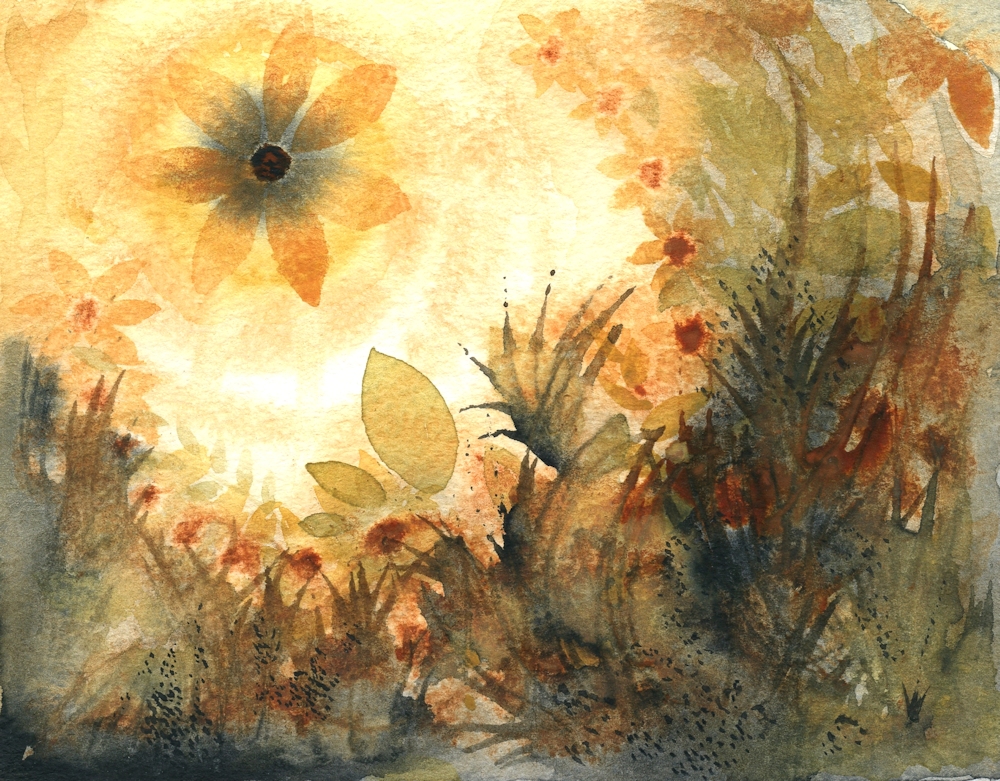
The purest definition of an earth pigment is that it derives from a naturally occurring mineral source. However the term seems to be more loosely applied today to include some pigments derived from plant extracts such as Indigo, and even a few synthetically produced pigments some of which now replace their less stable naturally occurring counterparts. For our purposes earth pigments will include most of the less saturated pigments i.e. the ochres and reddish browns etc.
The first pigments were discovered and extracted from minerals over forty thousand years ago and very soon Palaeolithic artists not only ground existing ochres from rocks but fired them to make other colours. They made crayons using ground pigment and spittle or vegetable gum binders and had a great variety of ochres from yellow to dark reds and browns at their disposal, together with carbon black from charcoal. If you are interested in how they made pigments and the chemical constituents of earth colours try the link below:
https://edu.rsc.org/resources/prehistoric-pigments/1540.article
It is a sobering thought that we still use pigments from the same mineral sources today although some have been superseded by synthetic equivalents.
Since the time of ancient Egypt many blue colours were obtained from azurite a copper carbonate mineral, which is unstable and becomes greener as it weathers. It was widely used in Europe in the twelfth and thirteenth centuries and was used by Holbein to paint the background of Lady with a Squirrel. Less expensive than lapis, azurite was a precursor to cerulean blue and is the only reason I can think that cerulean is included in some earth triads.
The Pinterest board for this week’s challenge is a collection of art works that are either painted or made with earth pigments or could easily be interpreted in those colours. There is rather a large content from the Palaeolithic ages which may fire your imagination and other art forms including mosaics and frescoes, finishing with several landscapes. This week the challenge will be to choose an earth palette and make a painting of a landscape, natural form or inspired by rock art, just with three earth pigments that approximate a yellow, a red and a blue.
https://www.pinterest.co.uk/jhall1282/limited-palettes/earth-palettes/
Practical
1. Collect the earth colours in your box and make swatches of each labelling them as you go.
2. Select an earth triad you would like to work with plus white This should contain one yellow, one red, and one blue equivalent plus white if wished.
Below are a few suggestions of earth triads you may experiment with. If you don’t have the exact pigment use the closest you have and you are quite free to make your own combinations of earth pigments. The following are triads ancient and modern!
a) Raw Sienna (or Transparent Yellow Ochre), Burnt Sienna, Paynes Grey
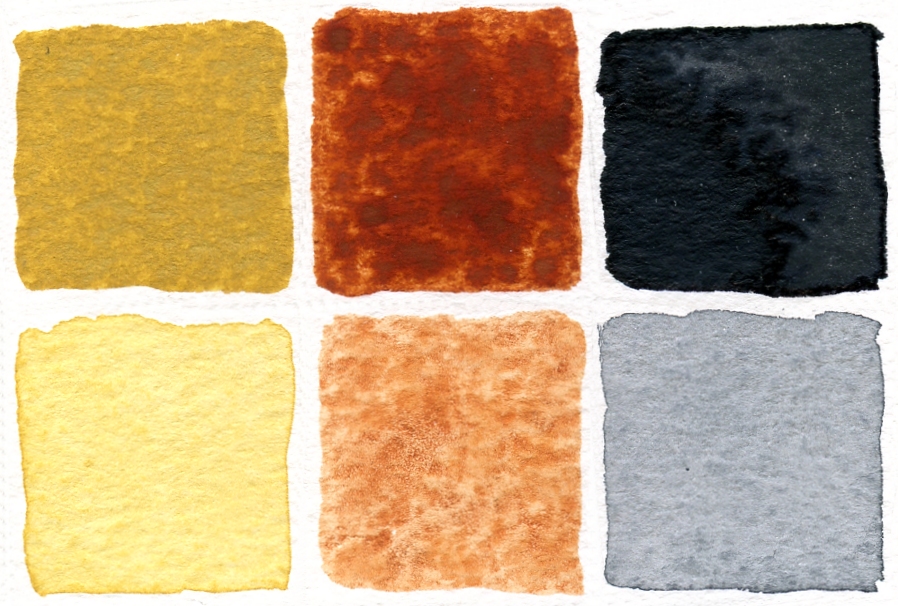
Second row pale
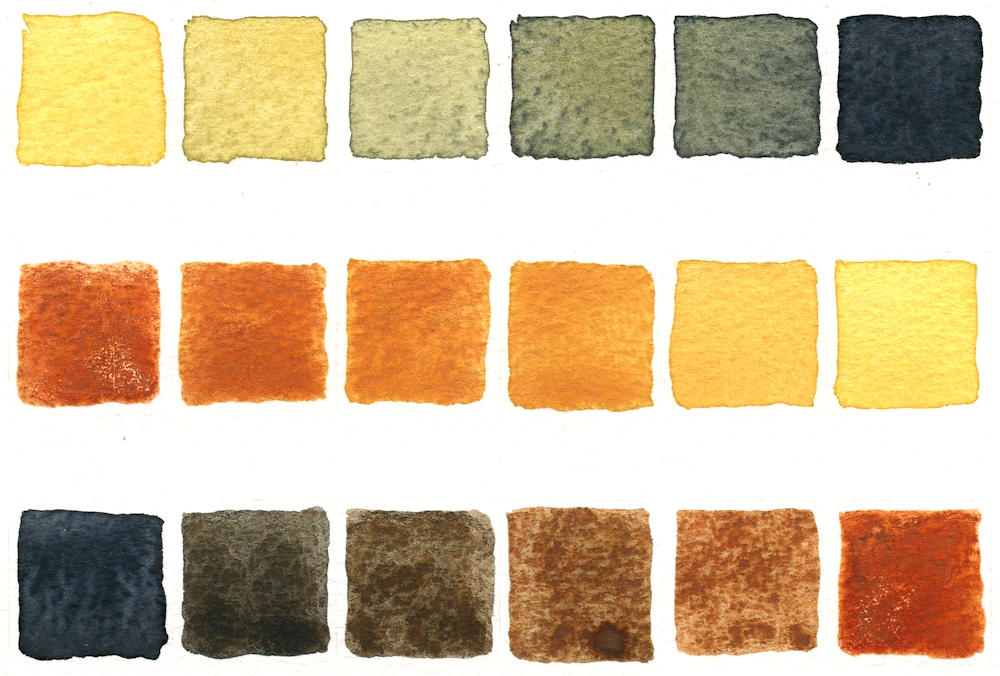
This is sometimes called the old masters earth triad and was a very useful combination of inexpensive pigments both for portrait and landscape studies. I prefer if possible to use the blue shade of Payne’s grey just because it allows mixing more definite green secondaries, albeit very desaturated greens. For this post I used a transparent Yellow Ochre. Raw Sienna is usually transparent and yellow ochre often opaque but is very slightly brighter than Raw Sienna.
b) Transparent Yellow Ochre, Light Red, Indigo
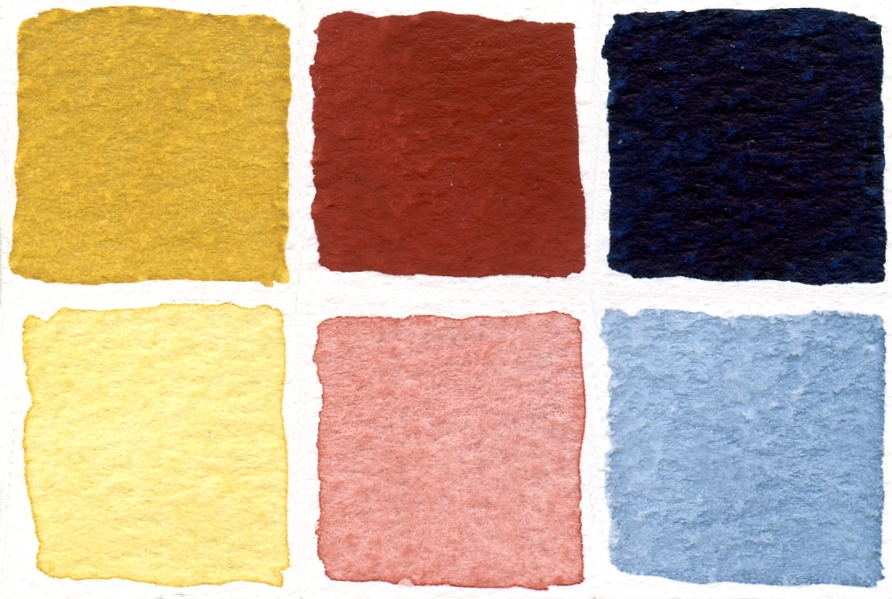
Second row pale

Red Oxide is a very opaque pigment and slightly redder but cooler than burnt Sienna. Indigo is usually semi-opaque and most often a mixture of pigments of including black, blue and sometimes violet or red constituents. Because of the greater blue content than Payne’s Grey a greater variety of greens can be mixed and because of the redness of the light red rather purplish browns can be achieved.
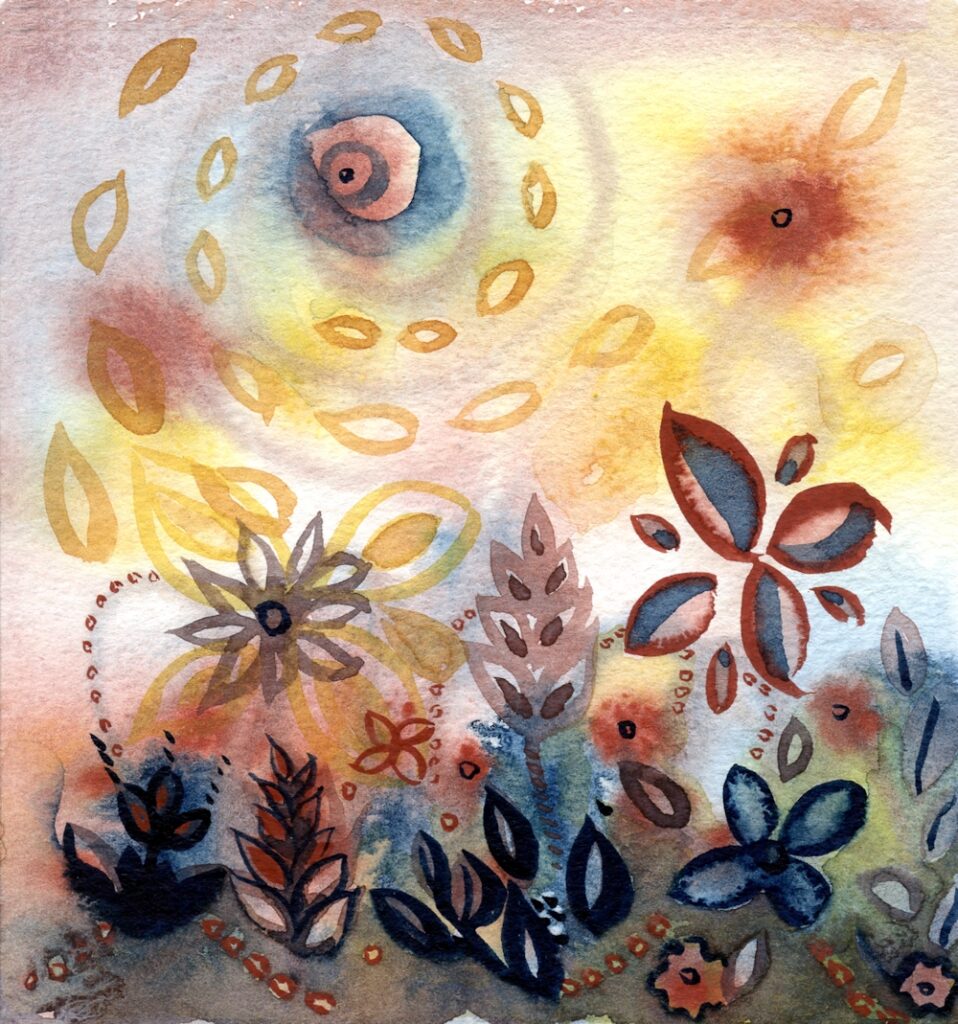
c) Quinacridone Gold, Brown madder, Indigo (bright earth, transparent)
I don’t have the first two pigments so would substitute a transparent Raw Sienna and a Permanent Madder Brownish. This should be an approximation as all the pigments are transparent and the brownish madder should allow some interesting shades.
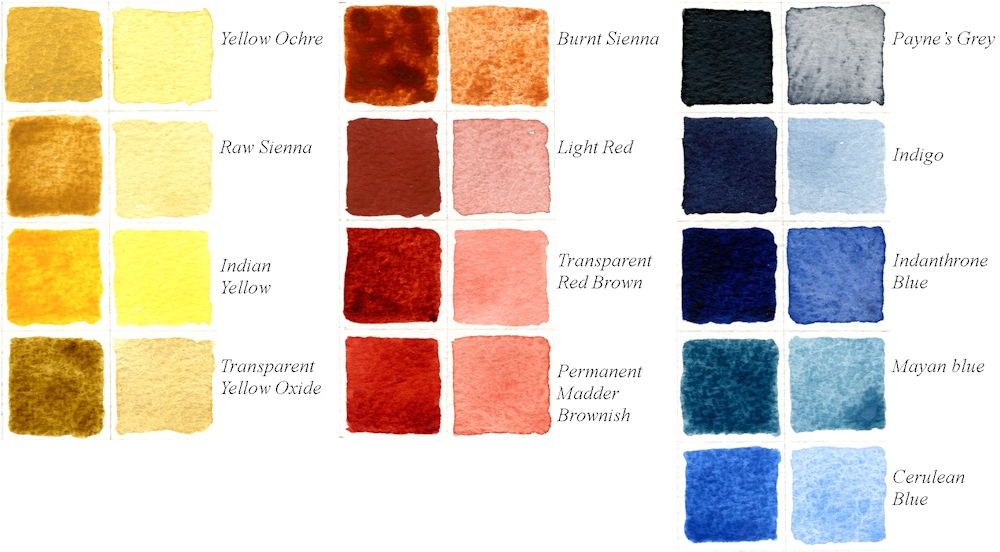
Some of the triads below have some pigments you may not have and are listed for interest but if you do have a tube or pan of for example Perylene Maroon and haven’t used it perhaps now is the time to try.
d) Raw Sienna, Transparent Red oxide, Cerulean: you won’t be able to make real darks with this triad but you could try substituting Indigo or Indanthrone Blue for the Cerulean. Red oxide is similar in appearance to Light Red and is available in opaque and transparent forms.
e) Yellow Ochre, Indian Red, Cerulean: another opaque and pale combination
f) Yellow Ochre, Red Ochre, Mayan Blue
g) Quinacridone Gold, Perylene Maroon, Indanthrone Blue: modern transparent
h) Raw Sienna, Quinacridone Burnt Scarlet, Indigo

Painted with Indigo, Light Red and Transparent Yellow Ochre
3. Paint your picture: landscape, natural form or inspired by ancient art
Having selected your colours and experimented with a few mixes, paint either a landscape or natural form or be inspired by a more ancient art form using some of the motifs from mosaics or even Palaeolithic cave paintings.
Your Paintings;
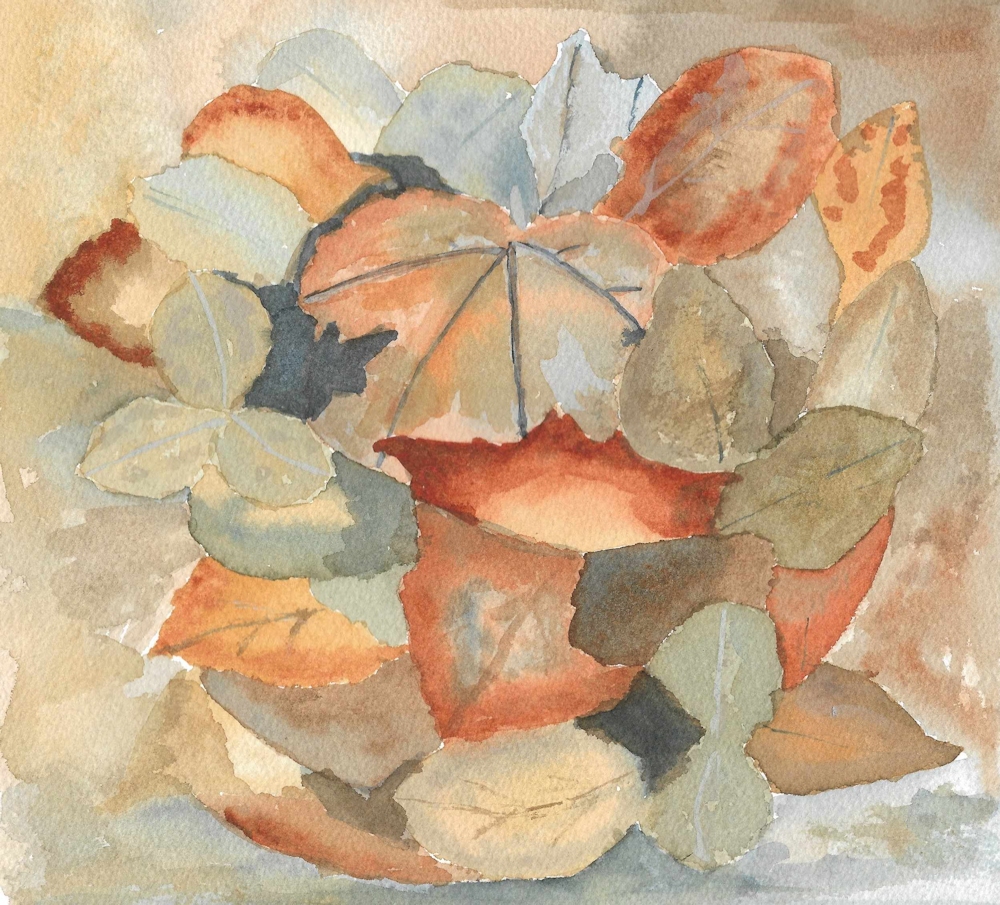
Yellow Ochre, Burnt Sienna, Payne’s Grey and Chinese White
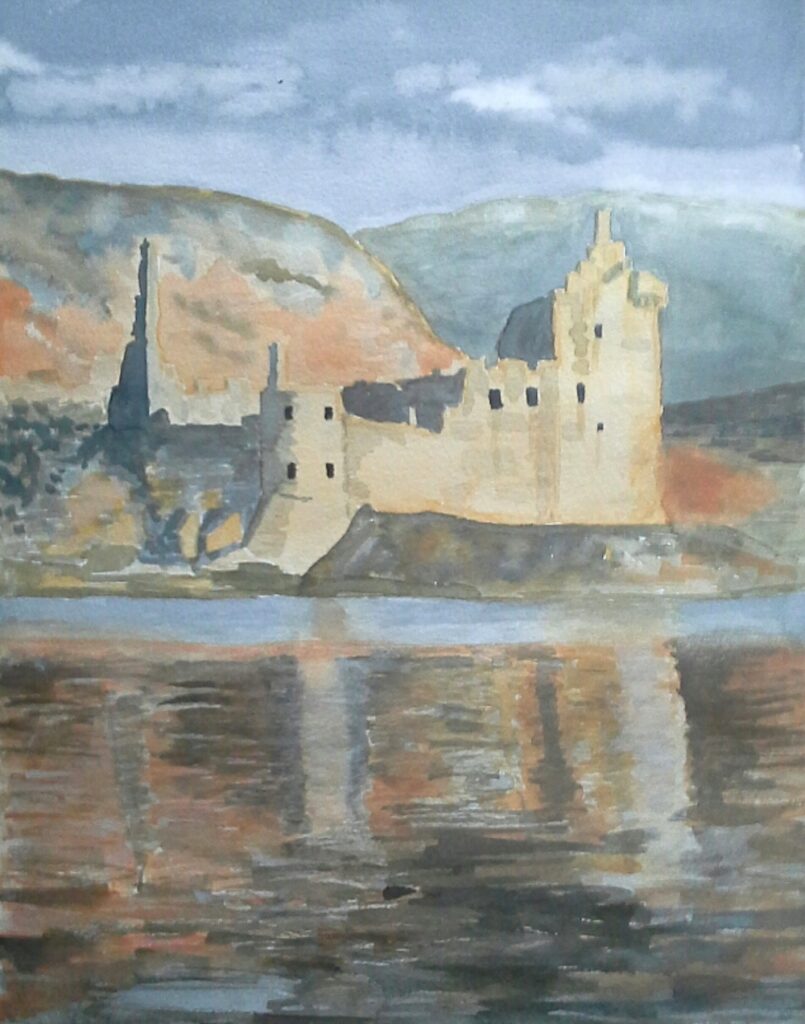
Yellow Ochre, Burnt Sienna, Payne’s Grey and Titanium White
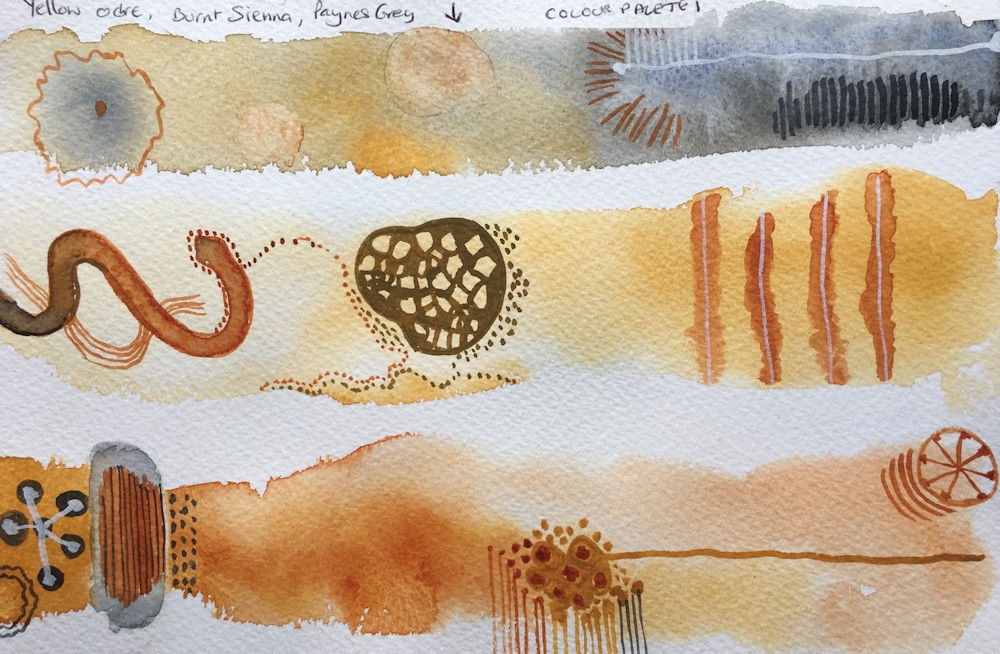
Yellow Ochre, Burnt Sienna, Payne’s Grey
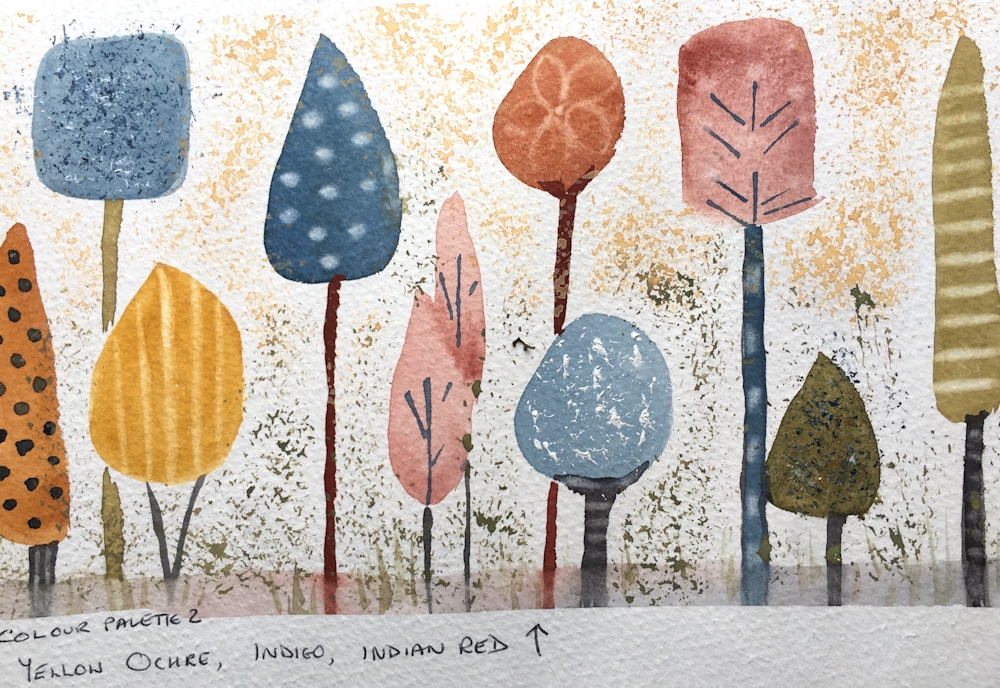
Yellow Ochre, Indian Red, Indigo
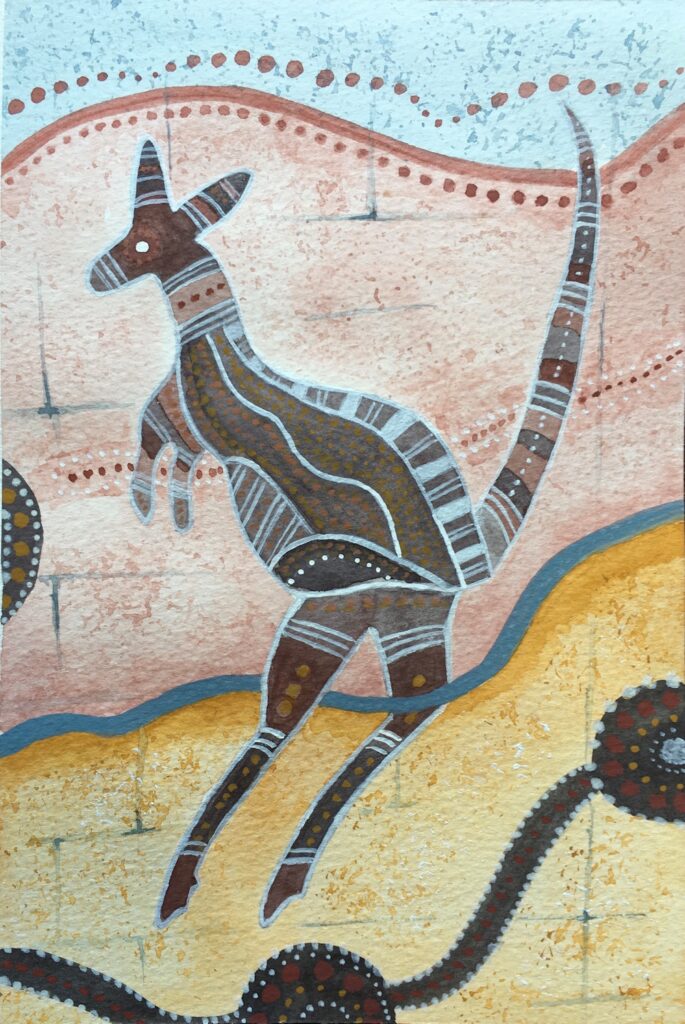
Yellow Ochre, Indian Red, Indigo

Inspired by art in Kakadu National Park
Yellow Ochre, Burnt Sienna, Paynes Gray

Yellow Ochre, Burnt Sienna, Payne’s Gray
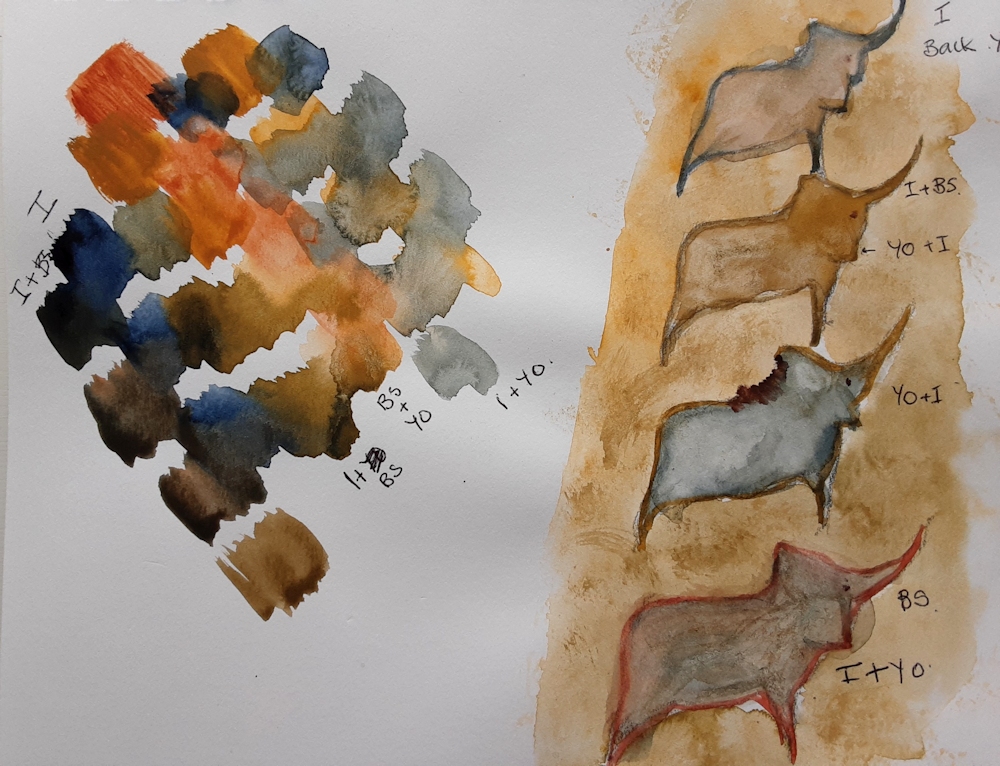
Yellow Ochre, Burnt Sienna, Indigo
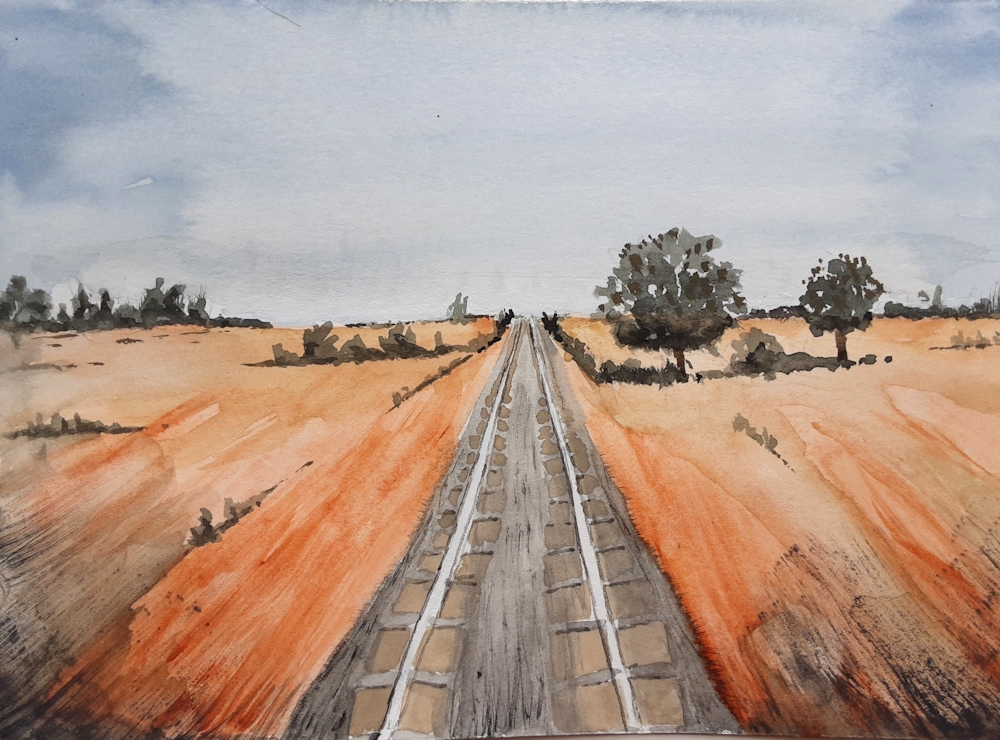
Yellow Ochre, Burnt Sienna, Indigo

Yellow Ochre, Burnt Sienna, Indigo

Yellow Ochre, Burnt Sienna, Indigo, White
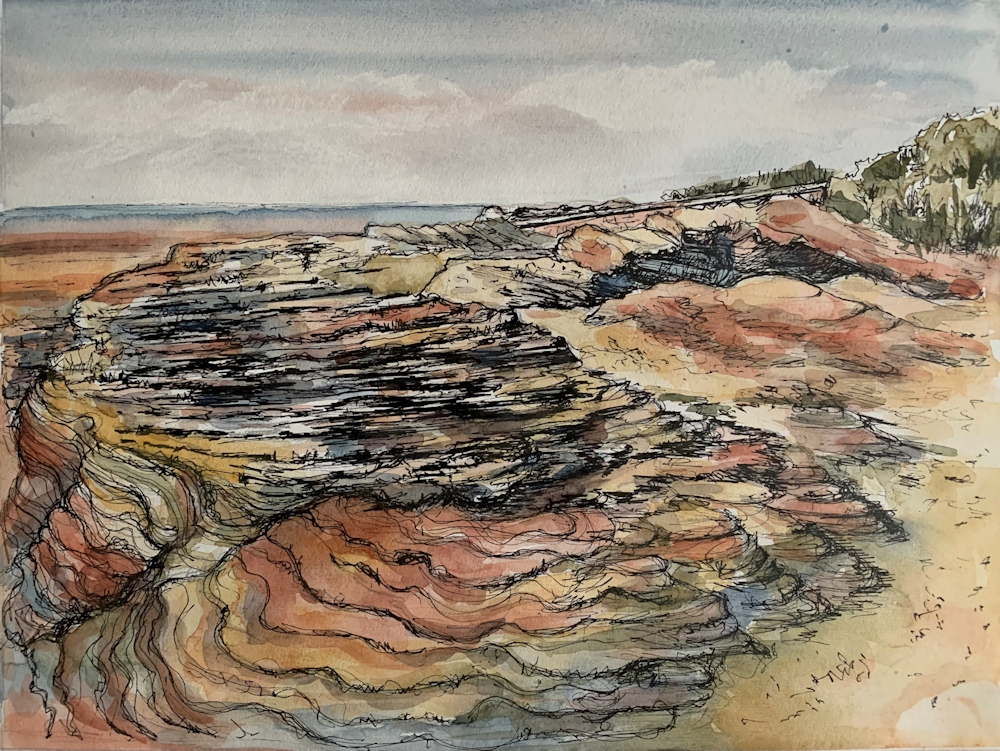
Yellow Ochre, Light Red,Indigo, Black Ink line

Yellow Ochre, Light Red, Intense Blue (Phthalocyanine Blue)
Left: colours mixed on a palette
Right: colours and secondary mixes mingling on the paper
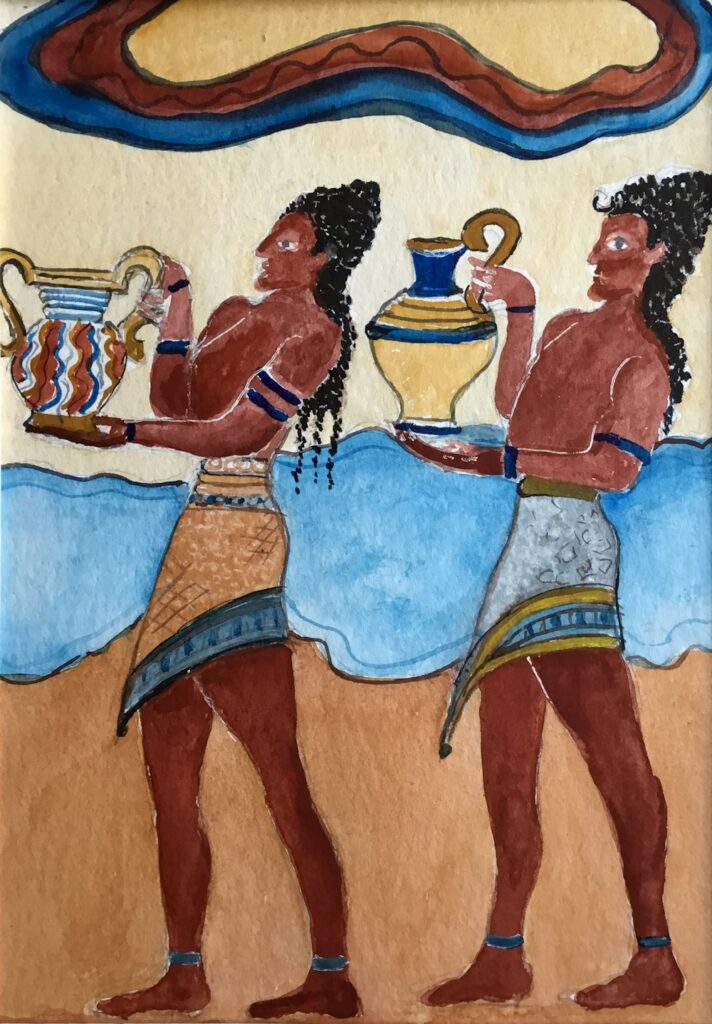
Yellow Ochre, Indian Red, Intense Blue (Phthalocyanine Blue)

Yellow Ochre, Rose Madder Hue, Prussian Blue
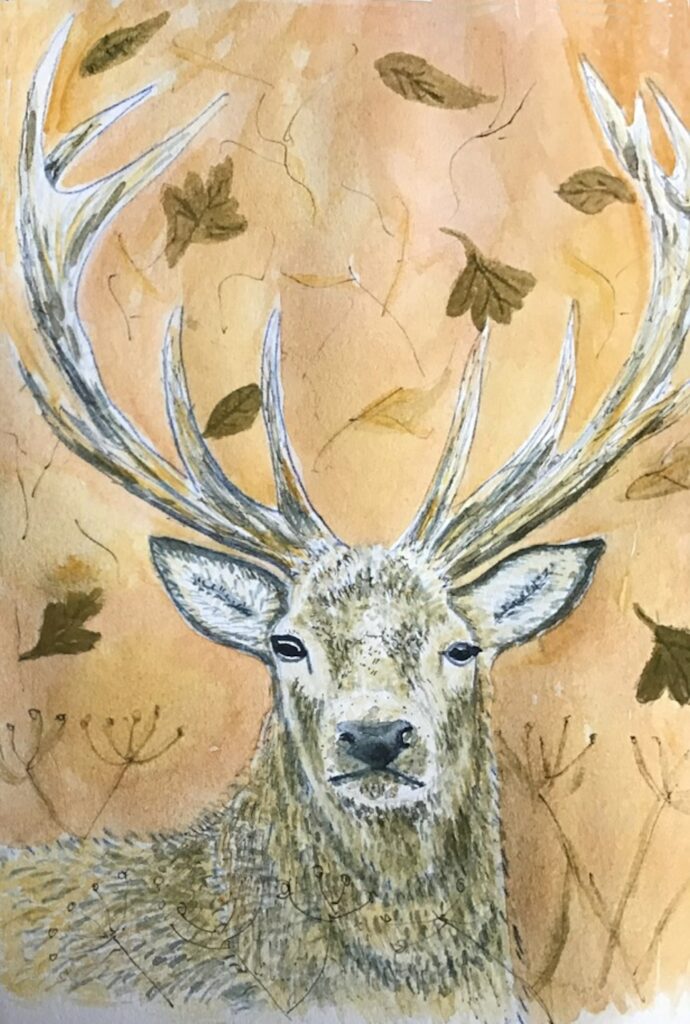
Yellow Ochre, Burnt Sienna, Payne’s Gray

Yellow Ochre, Burnt Sienna, Payne’s Gray
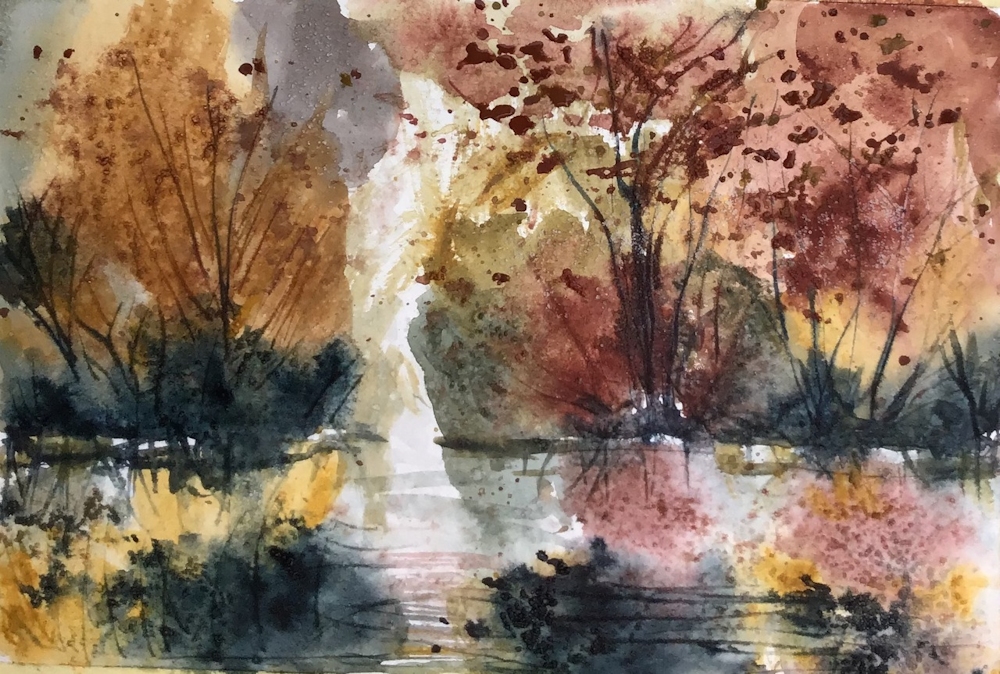
Yellow Ochre, Indian Red, Indigo
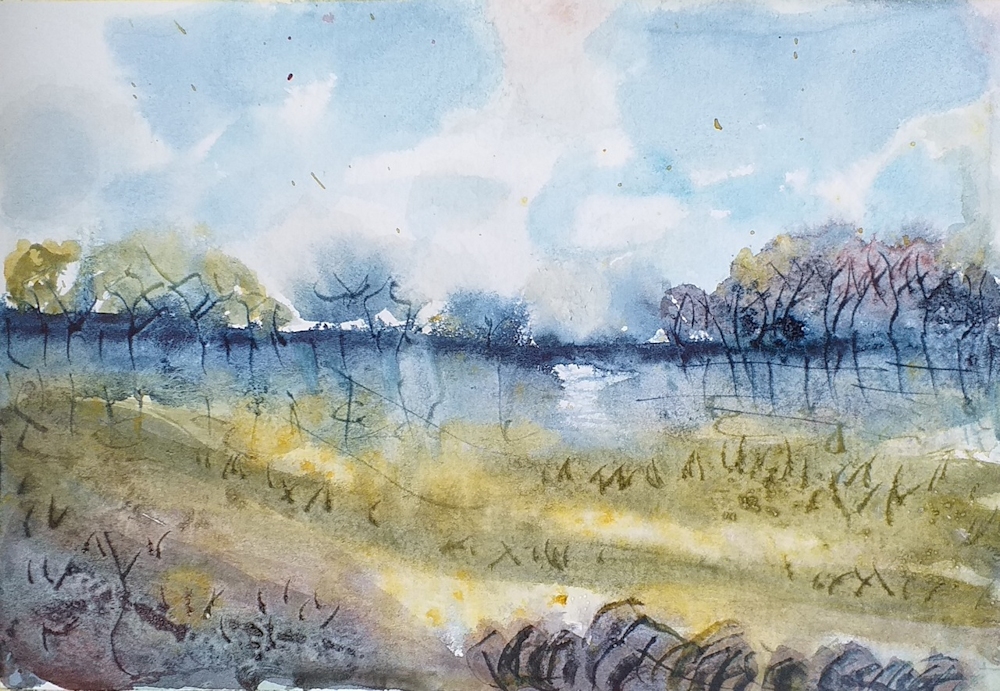
Yellow Ochre, Indian Red, Indigo

Yellow Ochre, Indian Red, Indigo
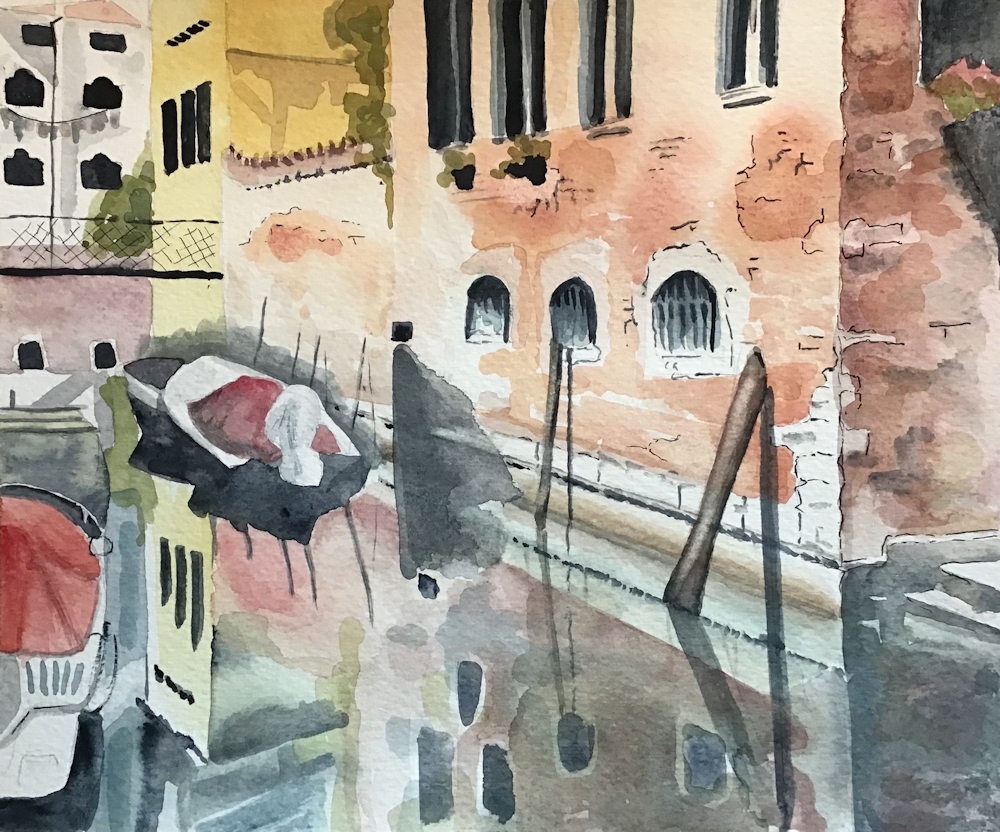
Quinacridone gold, Rose Madder, Indigo
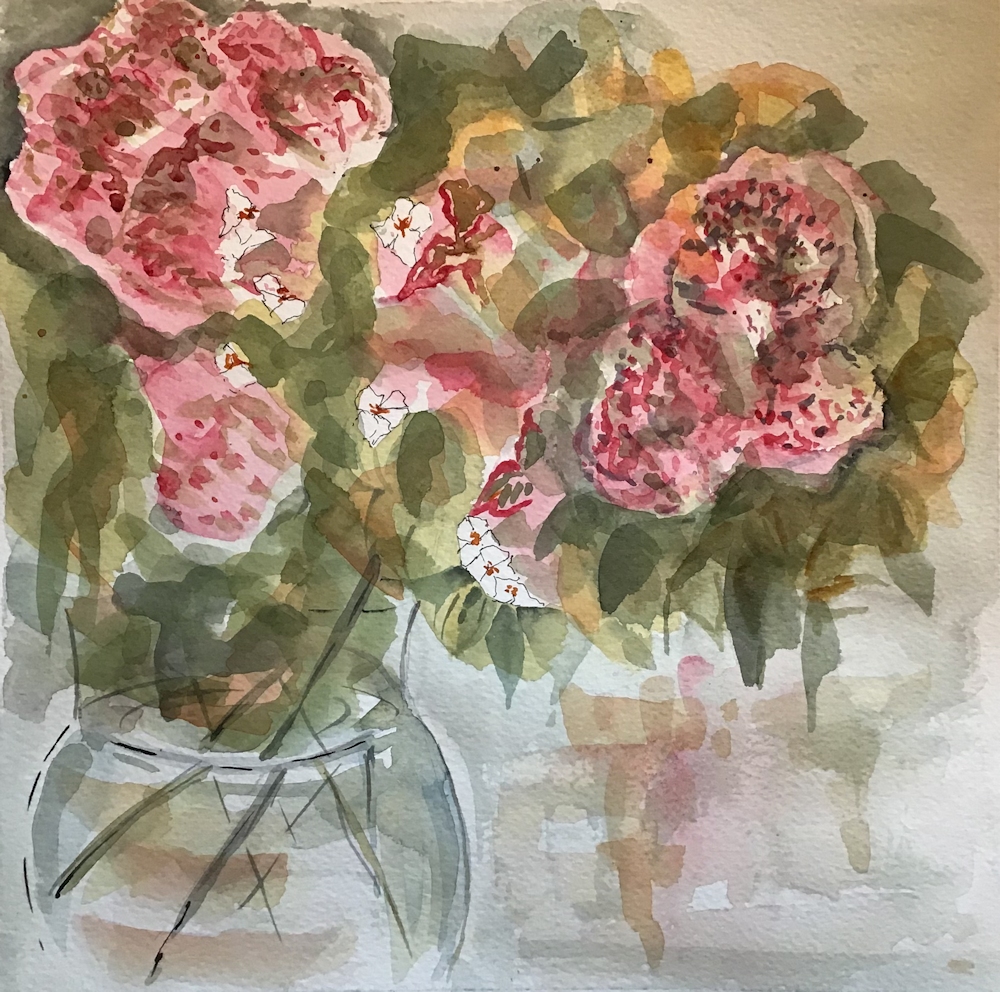
Quinacridone Gold, Rose Madder, Indigo
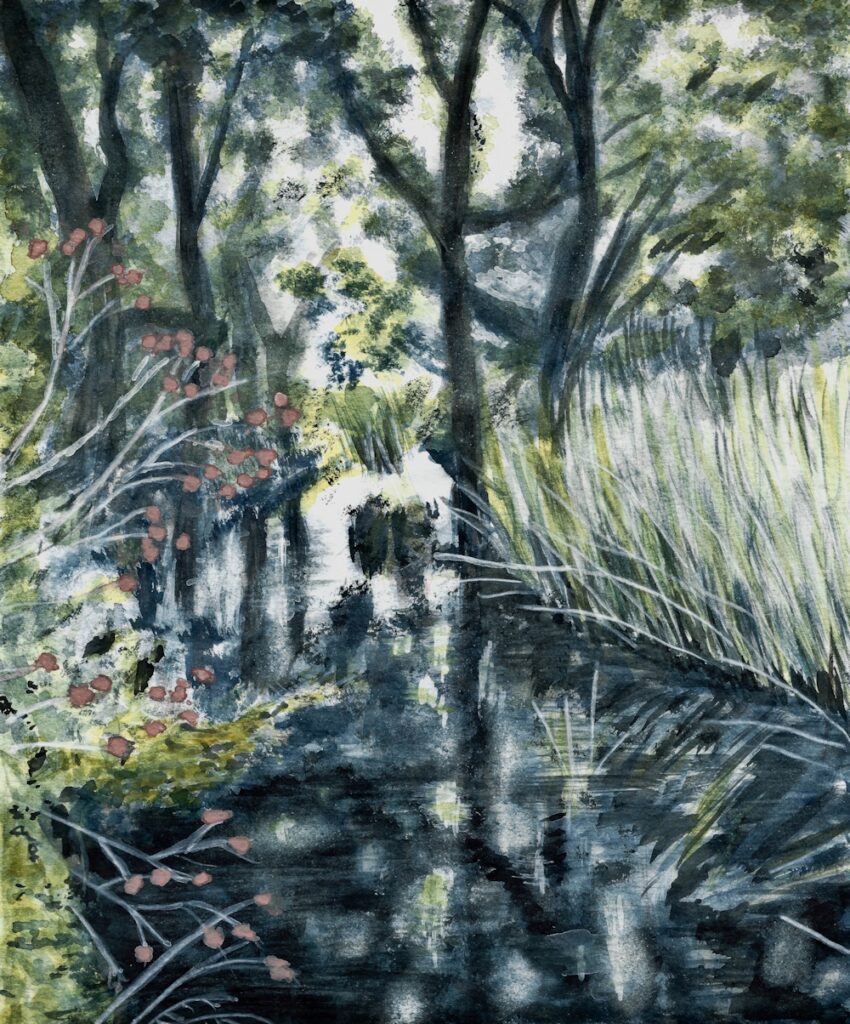
Quinacridone Gold, Indian Red, Indigo
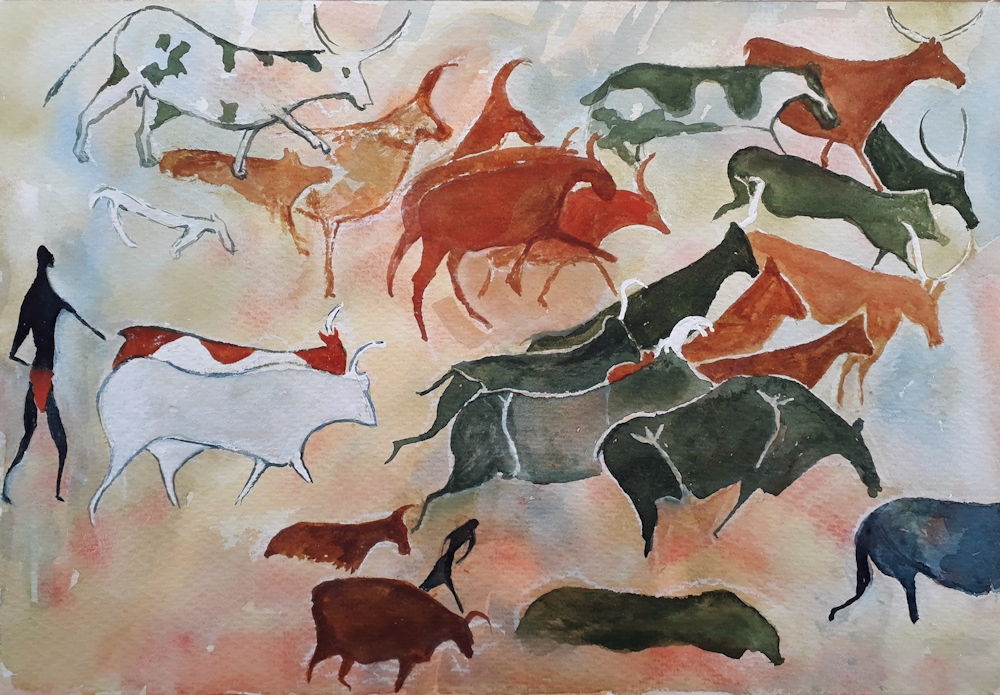
after a cave painting in the Tassili n’Ajjer mountains on the border of the Sahara
Quinacridone Gold, Titian Red, Indigo
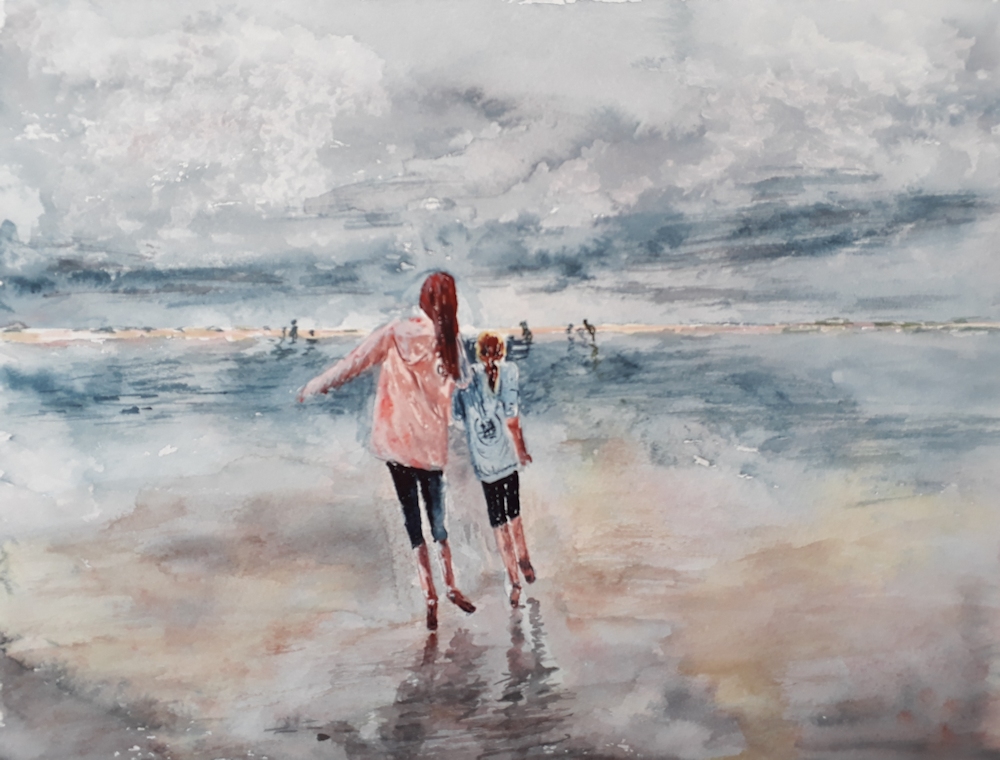
Quinacridone Gold, Titian Red, Indigo

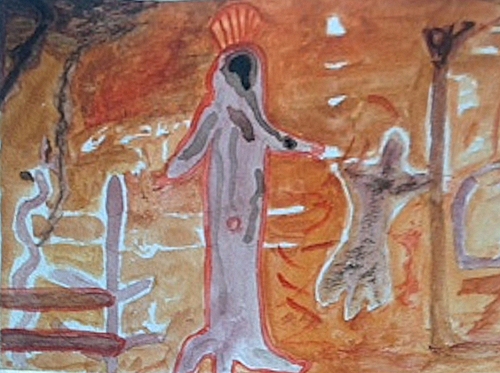

Yellow Ochre, Burnt Sienna, Payne’s Gray
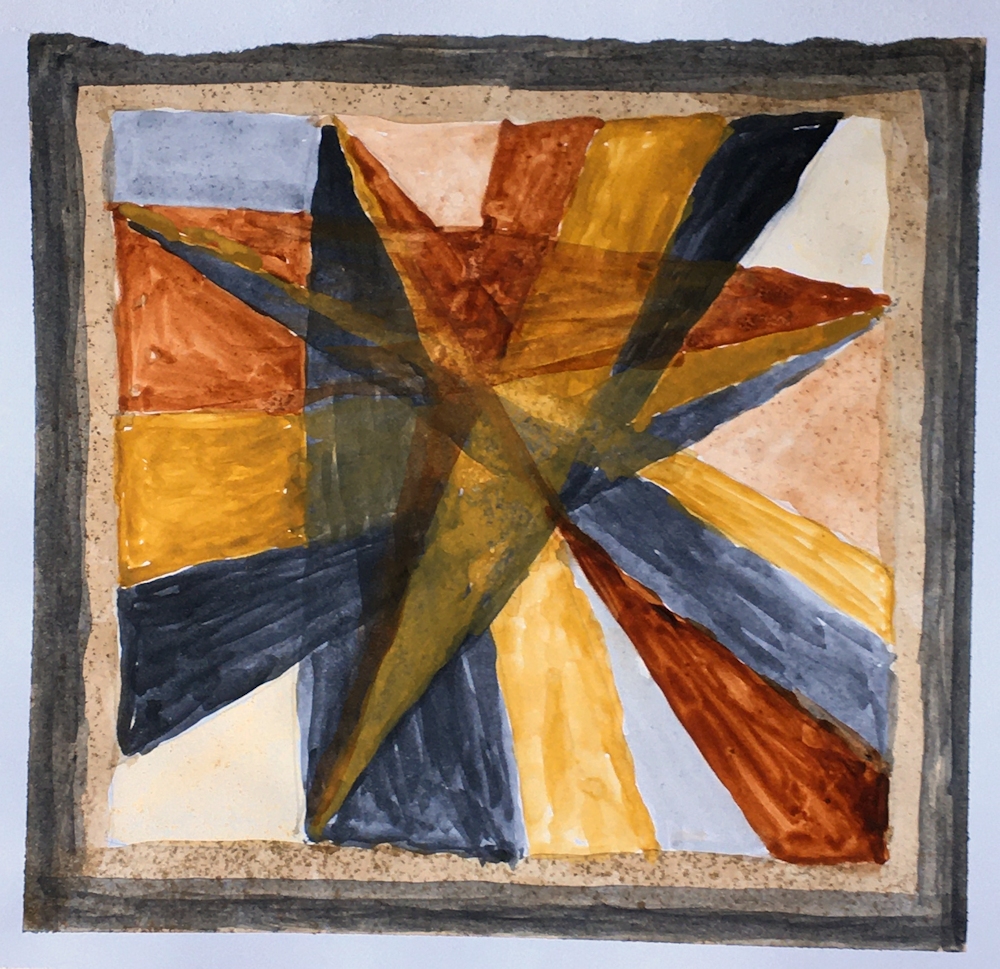
adapted from one of her silk scarf designs
Yellow Ochre, Burnt Sienna, Payne’s Gray

Yellow Ochre, Burnt Sienna, Payne’s Gray

Yellow Ochre, Vermillion, Indigo
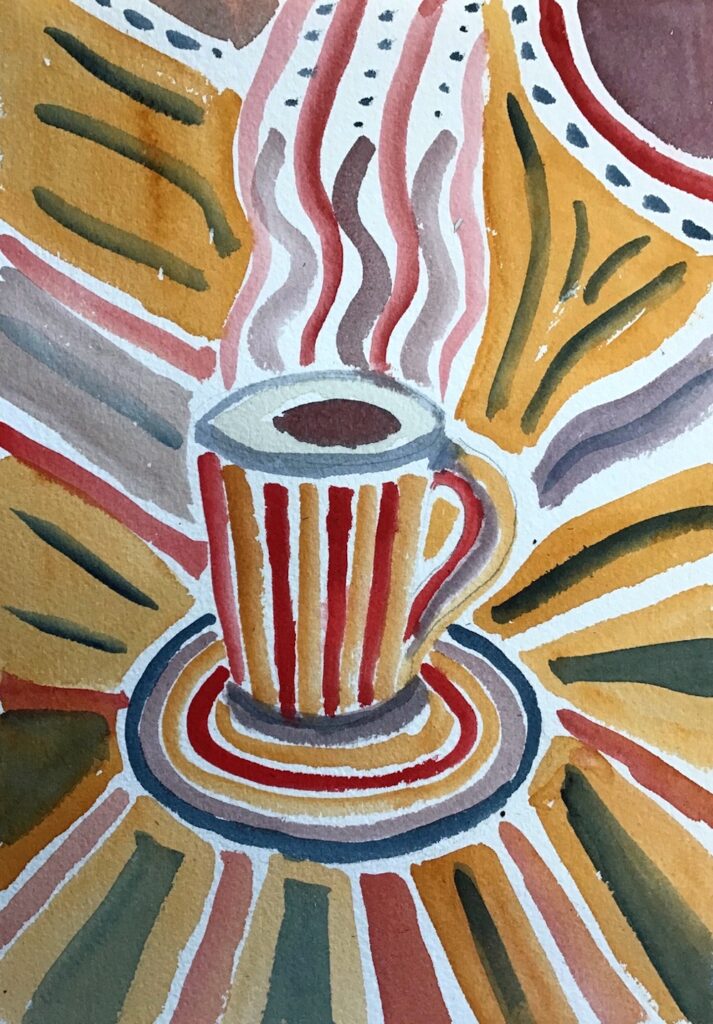
Gold Ochre, Madder Red Lake, Indigo

Gold Ochre, Madder Red Lake, Indigo
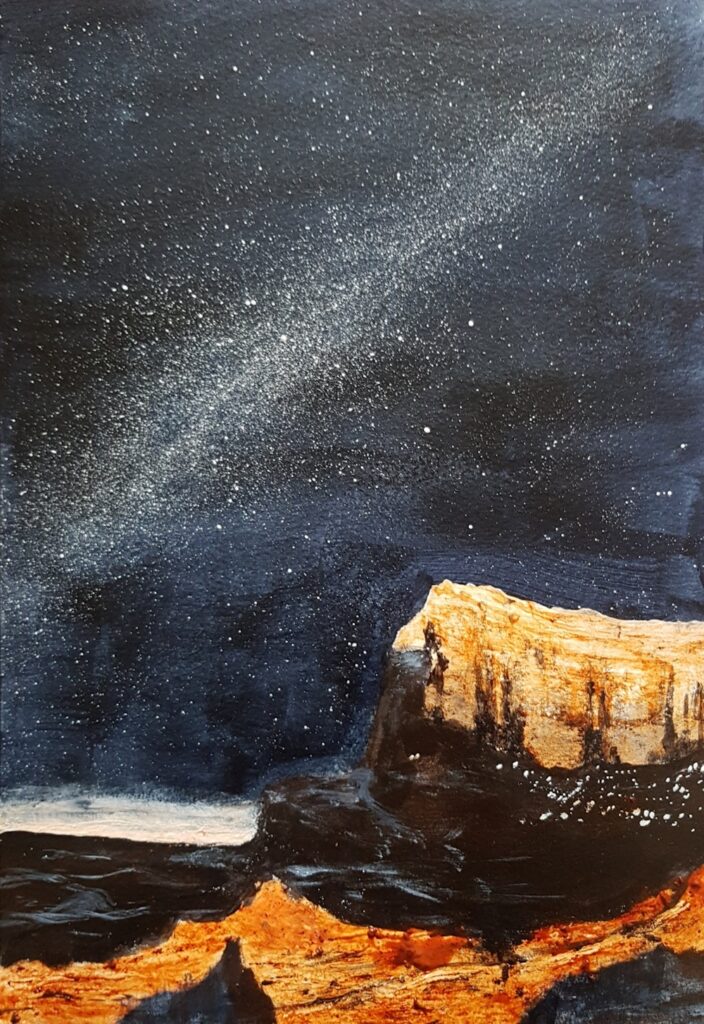
Transparent Red Oxide, Burnt Sienna, Payne’s Gray, White